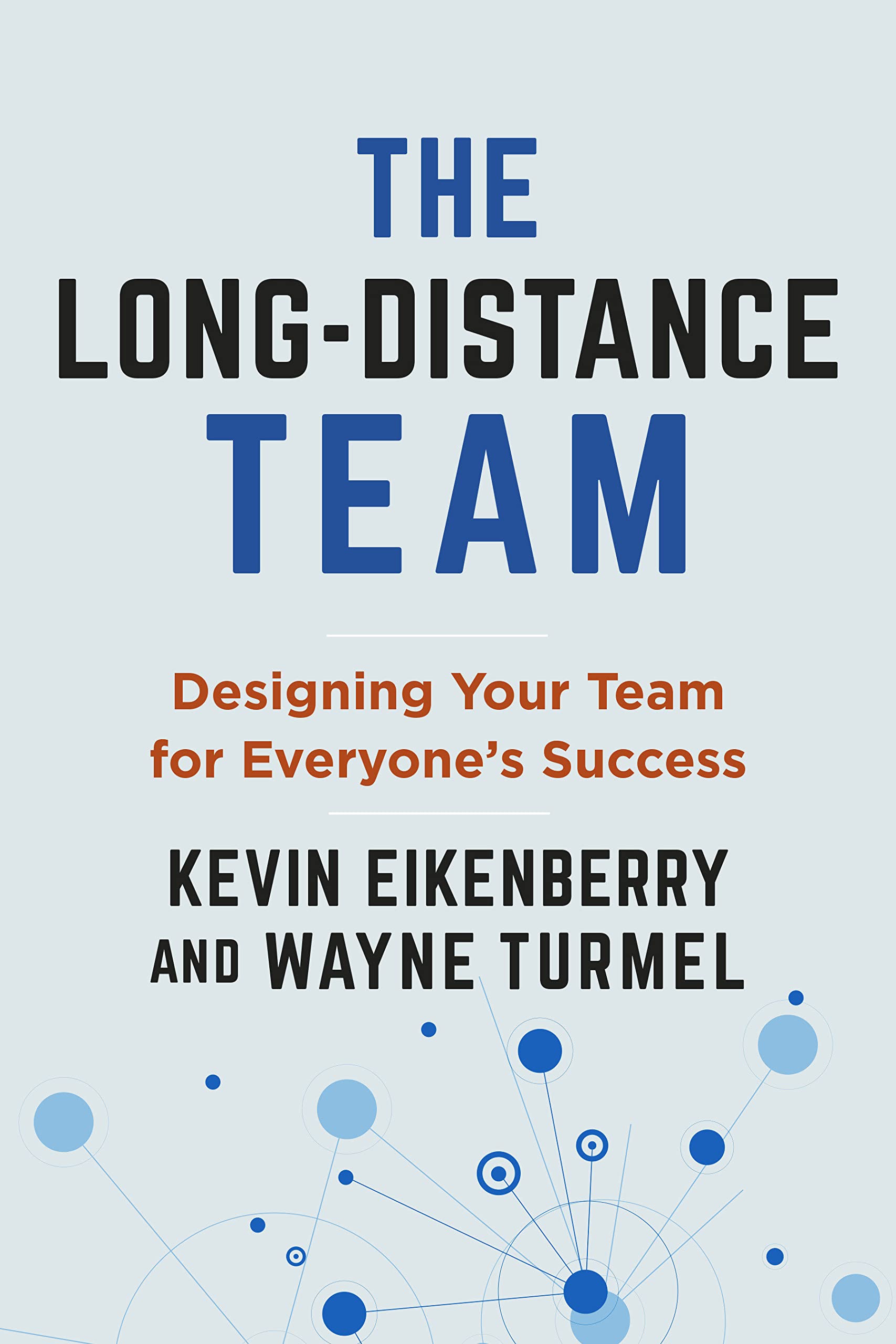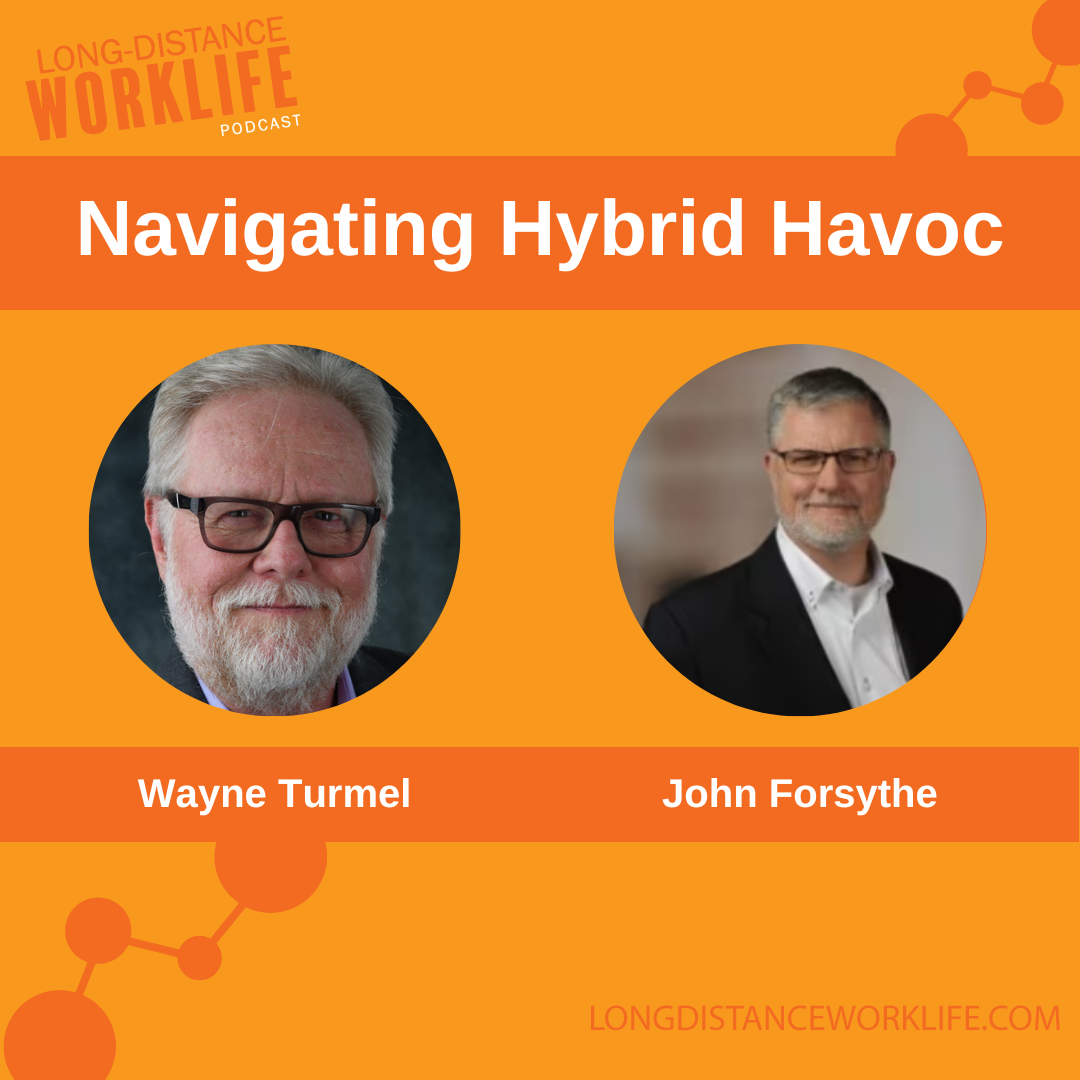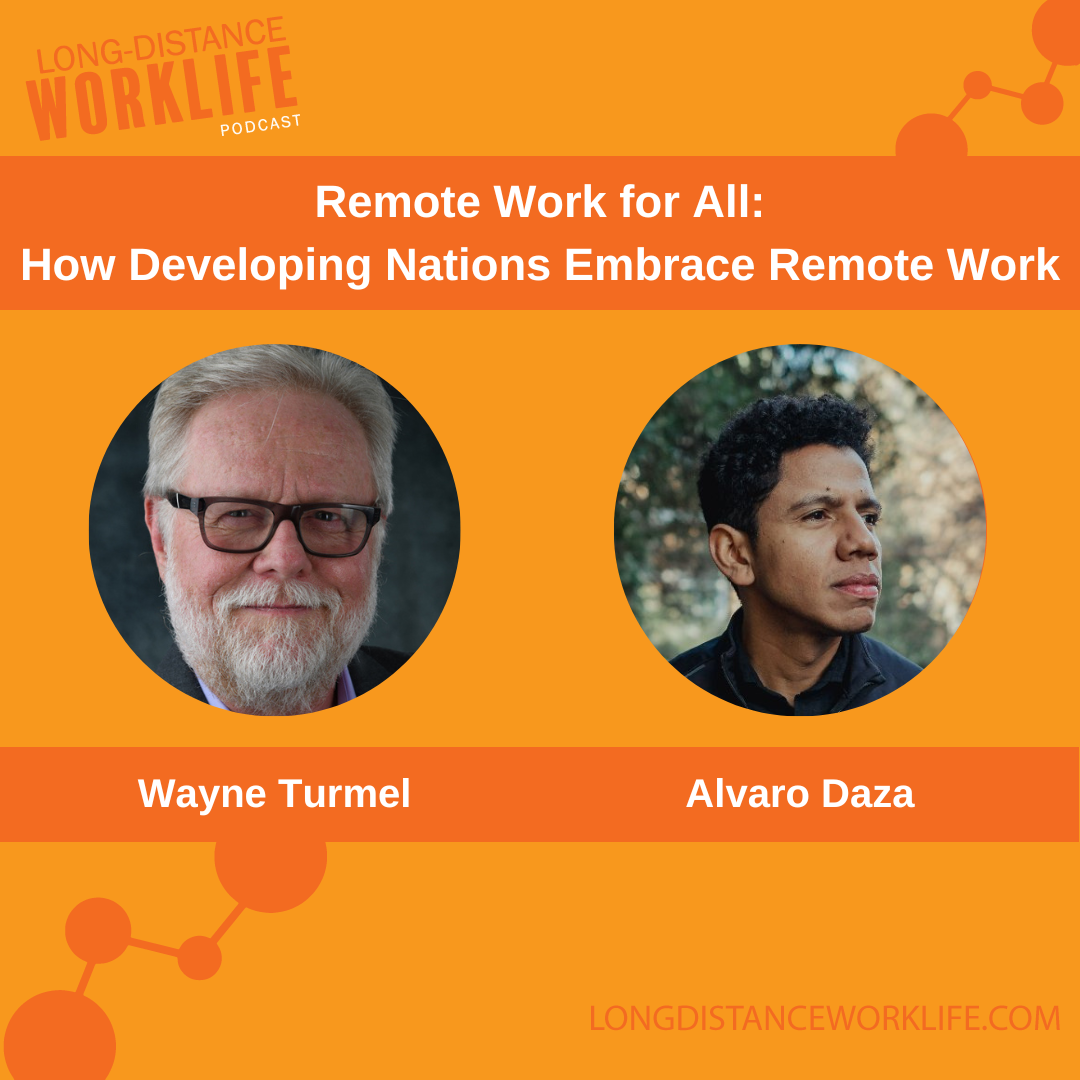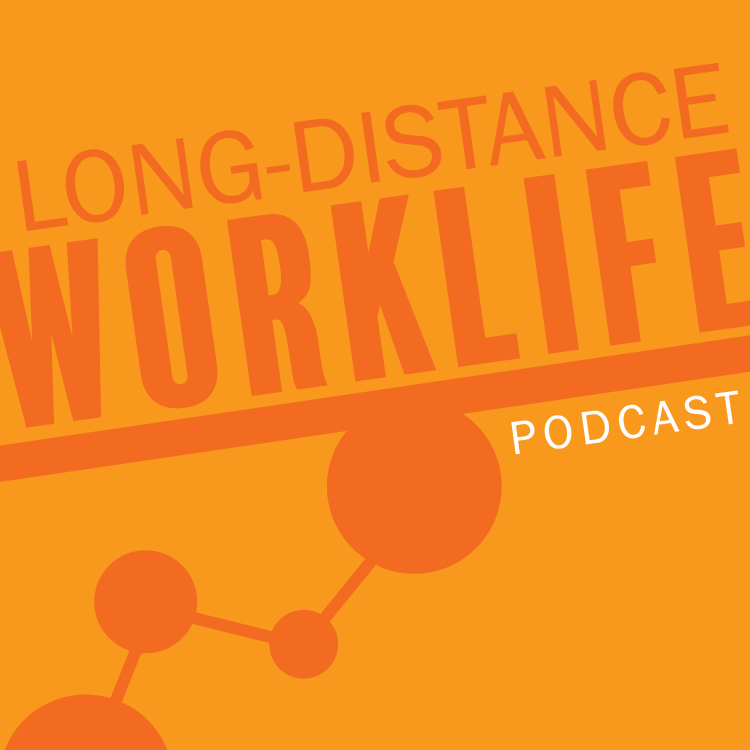In this week's episode, Marisa and Wayne revisit a topic mentioned in a previous episode about the Johari Window. They explore how this powerful model, developed by psychologists in 1955, can enhance communication and understanding within remote and hybrid teams. Discover the four quadrants of the Johari Window and how they reveal what is known and unknown to oneself and others. Learn why transparent and intentional communication is crucial in remote work settings, as cues and non-verbal signals are often missed. Discover practical tips and best practices for leaders to utilize the Johari Window framework to improve team dynamics and foster trust. Join us for this engaging conversation as we unlock the potential of the Johari Window for remote work success!
Key Takeaways
1. The Johari Window is a powerful model that helps explain the dynamics of understanding and communication. It consists of four quadrants representing what is known to oneself, known to others, unknown to oneself, and unknown to others.
2. Effective communication is vital in remote and hybrid team environments. Without the ability to rely on non-verbal cues or in-person interactions, intentional and transparent communication becomes even more critical for understanding and avoiding misunderstandings.
3. The Johari Window can be used as a tool to foster trust and improve relationships within remote teams. By sharing knowledge, motivations, and information with team members, individuals can reduce blind spots and increase mutual understanding.
4. Leaders play a crucial role in improving communication and utilizing the Johari Window effectively. They should encourage open dialogue, ask clarifying questions, and create a transparent environment where team members feel comfortable sharing their thoughts, feelings, and concerns.
5. In remote work settings, it's essential to pay attention to changing behaviors or signs that something may be off with team members. Remote work can make it harder to notice when someone is struggling or facing challenges, so being attuned to these changes and initiating supportive conversations is crucial.
Time Stamps
00:00 Introduction
00:08 Defining the Johari Window
00:33 Understanding Remote Application
02:13 Importance of Communication
05:00 Applying the Johari Window to Remote Work
05:29 Recognizing Communication Challenges
10:22 Using the Johari Window Framework
11:18 Drawbacks and Trust
12:56 Best Practices for Leaders
15:08 Closing
Related Episodes
Additional Resources
- The Johari Window
- Learn more about Wayne Turmel
- Email Wayne Turmel
- Connect with Wayne Turmel on LinkedIn
- Learn more about Marisa Eikenberry
- Email Marisa Eikenberry
- Connect with Marisa Eikenberry on LinkedIn
- Purchase a copy of The Long-Distance Leader
- Purchase a copy of The Long-Distance Teammate
- Purchase a copy of The Long-Distance Team
- The Kevin Eikenberry Group
Order The Long-Distance Team
Remote leadership experts, Kevin Eikenberry and Wayne Turmel, help leaders navigate the new world of remote and hybrid teams to design the culture they desire for their teams and organizations in their new book!

00:00:08:10 - 00:00:11:07
Marisa Eikenberry
Welcome back to the long distance work life where we help you lead,
00:00:11:10 - 00:00:19:13
Marisa Eikenberry
work, and thrive on remote and hybrid teams. I'm Marisa Eikenberry, a fellow remote worker. And joining me is my co-host and remote work expert, Wayne Turmel. Hi.
00:00:19:15 - 00:00:22:05
Wayne Turmel
Hey, that would be me. Hi, Marisa.
00:00:22:07 - 00:00:23:12
Marisa Eikenberry
How are you doing today?
00:00:23:14 - 00:00:33:02
Wayne Turmel
I am swell. I. I'm excited. Today's topic is very fun and it's the kind of geeky thing that makes me happy, so.
00:00:33:04 - 00:00:48:12
Marisa Eikenberry
Awesome. Well, for those of you who have been listening for a while, or maybe you just tuned in to our Managers are the Heartbeat episode, Wayne mentioned something called the Johari Window and said we need to talk about it in future episode because we didn't have time right then. So today's the day and we're going to talk about that.
00:00:48:13 - 00:00:52:12
Marisa Eikenberry
So, Wayne, why don't we start with what is the Johari window?
00:00:52:14 - 00:00:59:23
Wayne Turmel
The January window is a model and like all successful models, it's deceptively simple.
00:01:00:01 - 00:01:00:11
Marisa Eikenberry
Right?
00:01:00:15 - 00:01:46:10
Wayne Turmel
Basically a good consultant for Square. These two psychologists in about 1955 came up with this. And it's an attempt to explain why people don't always understand each other and what makes sense. And so if you picture a square and there's things that are known to our cells on the Y axis and across the bottom, you've got things that are known to others and you've got these four boxes and they're basically when it comes to yourself, there are things that you know about yourself.
00:01:46:12 - 00:01:47:07
Marisa Eikenberry
Of course.
00:01:47:09 - 00:02:13:22
Wayne Turmel
And then there are things that you don't know about. So it's subconscious unconscious things that we do. And then next to that, there are things others know about you. So there are things you know, and there are things that others know about you. Wayne is an extrovert, but not as much as we think he is. So if he gets tired and grumpy, leave him alone.
00:02:13:22 - 00:02:16:08
Wayne Turmel
He'll be all better. Everybody knows that.
00:02:16:12 - 00:02:28:23
Marisa Eikenberry
You're right. And for those of you who are listening on audio, we're going to have a link to what this looks like in the show notes. And those of you that are watching on video, you're actually seeing the Johari window or have already seen it in this episode.
00:02:29:00 - 00:02:50:18
Wayne Turmel
So, you know, we know that about Wayne. So if we're going to work with Wayne, he knows that it's no surprise to him that he can be a grumpy, cranky old man and everybody else knows it too. But he's harmless and so no harm, no foul. But there are also things that they might not know or that they might know that I don't.
00:02:50:20 - 00:02:51:05
Marisa Eikenberry
Okay.
00:02:51:06 - 00:03:18:06
Wayne Turmel
Yeah, right. So there's things I know that I know there are things that I don't know. There are things about other people that I don't know, and there are things that other people don't know about me. And that's essentially the model. And it makes sense. I think I use the cynically I used an example from the Gulf War where Donald Rumsfeld said there are things we know, there are things we know we don't know.
00:03:18:08 - 00:03:22:11
Wayne Turmel
There are things we don't know that we don't.
00:03:22:13 - 00:03:24:17
Marisa Eikenberry
Right. Yeah. You know what you don't know.
00:03:24:19 - 00:03:44:01
Wayne Turmel
And all of this is a way of saying that any time you're in a work environment, communication is important. The more you share knowledge, the more you know and your colleagues or your boss or your customers know, the less chance there is for misunderstanding.
00:03:44:03 - 00:03:45:07
Marisa Eikenberry
Right.
00:03:45:08 - 00:04:03:08
Wayne Turmel
Now, the next question, because you are nothing if not a professional and you have a list in Philadelphia. The next question. Because I know that about Marisa. You see how that works. The next obvious question is when we're talking about remote work.
00:04:03:09 - 00:04:05:03
Marisa Eikenberry
Yes. How does this apply?
00:04:05:05 - 00:04:26:22
Wayne Turmel
Right. How does this apply? And the answer is that on one hand, like so much that we talk about here, it's exactly the same, right, when you're working on a team. If you don't share your motivations, if you don't share information that you know with your team, it makes it harder for them. There's a better chance for misunderstanding.
00:04:26:22 - 00:04:51:23
Wayne Turmel
There's a chance the quality of the work won't be as good. But of course, in a in person setting, there are cues and there are sort of things in the air that you pick up by osmosis. You know something's bugging Marisa today. What's going on? I know that because I look at you and you get that little forehead scratchy thing, and that's great.
00:04:51:23 - 00:05:00:11
Wayne Turmel
If the only contact I have with you is on Slack and you typed me a message. I may not know that your forehead is screeching.
00:05:00:12 - 00:05:01:06
Marisa Eikenberry
Right.
00:05:01:08 - 00:05:17:17
Wayne Turmel
It's thing. And so that's why it's important in a remote environment to intentionally and appropriately help people get access to information that they need.
00:05:17:19 - 00:05:29:11
Marisa Eikenberry
Right. It's just like we talk about all the time, like communication is super important and we need to be communicating with the members of our team and our managers and our leaders and our leaders need to be communicated. The employees and you get the whole deal.
00:05:29:13 - 00:05:43:00
Wayne Turmel
Well, I do. And here's the thing that I like about models. None of them are perfect. Of course, no such thing as a perfect model. And Lord knows the human beings that the models apply to are not perfect.
00:05:43:02 - 00:05:43:16
Marisa Eikenberry
Right.
00:05:43:18 - 00:05:51:22
Wayne Turmel
But what I like is anything that I can look at that stops me in my tracks and says, Hey, have you thought about this?
00:05:51:23 - 00:05:52:12
Marisa Eikenberry
Yes.
00:05:52:17 - 00:06:01:03
Wayne Turmel
Right. If we aren't getting the work done, if there's a lot of maybe there's a lack of trust.
00:06:01:05 - 00:06:02:19
Marisa Eikenberry
Okay.
00:06:02:21 - 00:06:23:21
Wayne Turmel
Because I've worked with Marisa a few times and it works. Okay? Doesn't you know, here's the thing. If you're looking at the window, Marisa is going, Hey, I'm working as hard as I can. I've never done this before, or I'm a little stressed. Wayne seems like a jerk. So if I screw up, you know, it's going to. It's going to.
00:06:23:21 - 00:06:25:05
Marisa Eikenberry
Be. I don't want them to yell at me.
00:06:25:07 - 00:06:45:04
Wayne Turmel
That's what's going on in your head. Mm hmm. Right. I'm in the window of. I don't know what's going on in your head. I'm only seeing the work product. And the work product. And this is obviously not true. Dear listener, the work product is not what it should be. That's what I see.
00:06:45:06 - 00:06:46:15
Marisa Eikenberry
Yeah, that makes sense.
00:06:46:17 - 00:07:10:03
Wayne Turmel
Right now, if we have a conversation and I go, you know, the work product could, it could have more detail to it. Mm hmm. What's going on? And we have a conversation and you get to. Well, I didn't want to overloaded with detail because I was in a meeting one time, and you said somebody talked too much, and so I was trying not to do that.
00:07:10:05 - 00:07:10:17
Marisa Eikenberry
Right.
00:07:10:18 - 00:07:19:07
Wayne Turmel
We can have a conversation about the appropriate level of detail that I need on this. And now we both know what we know.
00:07:19:09 - 00:07:20:17
Marisa Eikenberry
Right. Absolutely.
00:07:20:19 - 00:07:50:16
Wayne Turmel
Right. That's the thing, is that there needs to be more explicit conversations and it's about things like how does this affect you? Right. Are you confident in this? Are you I'm confident in this. Those are sometimes uncomfortable conversations depending on your work style and your personality and who you're talking to and power structure and all kinds of things.
00:07:50:17 - 00:07:51:13
Marisa Eikenberry
Right.
00:07:51:15 - 00:08:30:20
Wayne Turmel
And they're critical. That's how you build trust. Because if there's a bunch of stuff in the I don't know this about her, when there is a better likelihood of there being an unpleasant surprise or, you know, I don't quite trust her because what I'm seeing isn't what she's saying. And so to me, the value of this is when at the first sign of something being off, you know, there was a famous Sherlock Holmes story.
00:08:30:21 - 00:08:43:03
Wayne Turmel
So famous, of course, I don't remember the title of it, but the idea is that he knew that the killer knew the victim because the dog didn't bark.
00:08:43:05 - 00:08:45:10
Marisa Eikenberry
Yes. Because it wasn't a stranger. Okay.
00:08:45:12 - 00:09:01:02
Wayne Turmel
Right. It wasn't a stranger. And so the fact that there wasn't a dog bark was actually the clue. And very often in remote work, it's what you don't see, you know, And usually that takes the form of changed behavior.
00:09:01:04 - 00:09:08:06
Marisa Eikenberry
I think we've talked about this a little bit before where it's like everything is fine and then something changes and it's like, oh, what happened here?
00:09:08:08 - 00:09:17:14
Wayne Turmel
And the problem is that when it changes radically and dramatically, your brain goes, Hey, wait a minute, there's something here.
00:09:17:16 - 00:09:18:07
Marisa Eikenberry
Right?
00:09:18:09 - 00:09:32:03
Wayne Turmel
It's when you get that frog in a pot. Thing and the analogy, as most of you know and I don't know who conducted this experiment because it's really nasty.
00:09:32:08 - 00:09:33:14
Marisa Eikenberry
I'm just like the poor frog.
00:09:33:17 - 00:10:00:08
Wayne Turmel
Yeah, the poor. How many frogs did they have to boil? The point is that the adage goes that if you put a frog in a pot of boiling water, the frog will jump out going, Hey, that's hot, you idiot. And if you put a frog in a pot of regular water and slowly turn up the heat, the frog will boil to death because he's not smart enough to realize that things have changed until it's too late.
00:10:00:10 - 00:10:12:01
Wayne Turmel
And on remote teams and in hybrid teams to a degree as well. Very often the frog is thoroughly cooked before we know there's a problem.
00:10:12:03 - 00:10:16:08
Marisa Eikenberry
Right. We've talked about this on a previous episode about burnout, especially.
00:10:16:10 - 00:10:22:15
Wayne Turmel
Yeah, exactly right. You don't know that somebody has passed their limit until.
00:10:22:17 - 00:10:24:04
Marisa Eikenberry
They put in another two weeks.
00:10:24:06 - 00:10:27:13
Wayne Turmel
Or a third notice or whatever it is. Exactly right.
00:10:27:18 - 00:10:42:09
Marisa Eikenberry
Yeah. So do you have any examples of like how the Johari window can be used to improve communication? I mean, I know we just talked about like if you do improve your communication in general, this is going to make all of this better because you're going to know stuff. But like, is there something specifically that leaders can do?
00:10:42:12 - 00:11:05:14
Wayne Turmel
Yeah, I think that it's really about asking questions, right? If, you know, there are two things asking questions and being transparent, you have to ask questions because and Kevin is well known for saying this, and I have plagiarized him shamelessly, which is your boss has a lot of talents. Reading your mind is not one of them.
00:11:05:17 - 00:11:08:23
Marisa Eikenberry
Right. Yeah. We are not mind readers. I say that a lot.
00:11:09:04 - 00:11:18:05
Wayne Turmel
In my view, some of us are better than others. Some of us pick up vibes or or do. The others are completely oblivious and we're going about our business.
00:11:18:08 - 00:11:21:04
Marisa Eikenberry
And some of that takes years to develop to.
00:11:21:05 - 00:11:34:18
Wayne Turmel
It does. And it's partly having your improving your radar in general. There's the length of the relationship and the depth and the solidity of the relationship with that individual person. Mm hmm.
00:11:34:20 - 00:11:41:22
Marisa Eikenberry
And sometimes it's also. Do you like them? Because if you like them, you're more willing to work on that relationship. And if you don't. Well.
00:11:42:01 - 00:11:54:16
Wayne Turmel
Well, exactly right. And here, you know, when it goes to confirmation bias so-and-so did that because they're having a bad day versus so-and-so did that because of course they did. Because they are.
00:11:54:18 - 00:11:55:13
Marisa Eikenberry
Right.
00:11:55:14 - 00:12:17:20
Wayne Turmel
So, you know, we need to get better at asking questions and you have to be very careful. Tone is critical when you're asking these questions. There is a fundamental difference between what were you thinking when you did that, What was going on right, versus what were you thinking?
00:12:17:22 - 00:12:21:14
Marisa Eikenberry
It's the goblet of. Harry, did you put your name on the Goblet of Fire?
00:12:21:16 - 00:12:46:23
Wayne Turmel
It's two separate. You know, there are two separate approaches to the exact same words. Right. You know, I because I tend to be grumpy and snarky. I try to avoid. What were you thinking? Even though that's. That's a perfectly legitimate question. I want to know what led you to that decision or to take that action.
00:12:47:04 - 00:12:47:14
Marisa Eikenberry
Right.
00:12:47:14 - 00:12:51:18
Wayne Turmel
And it's a legitimate question, but it's very easily misinterpreted.
00:12:51:18 - 00:12:56:01
Marisa Eikenberry
Yes. Way to say something like what was going on in your mind when this was happening?
00:12:56:03 - 00:12:58:20
Wayne Turmel
I don't even go there. I try to really what happened?
00:12:58:22 - 00:13:01:04
Marisa Eikenberry
Oh, that makes sense. You have done that with me now?
00:13:01:04 - 00:13:05:01
Wayne Turmel
Just one year. It's like what happened?
00:13:05:02 - 00:13:07:20
Marisa Eikenberry
Yeah. It's like I screwed up.
00:13:07:22 - 00:13:34:11
Wayne Turmel
Well, but here's the thing, right? If I say what happened, your response gives me way more information than the question itself. Actually warrants. Right. What you said. Oh, well, I screwed up. Okay. So she knows that she did something wrong. I don't have to come down on her like it, right? I have to figure out what happened. And how do we help her do that better?
00:13:34:13 - 00:13:35:15
Marisa Eikenberry
Mm hmm.
00:13:35:17 - 00:13:47:19
Wayne Turmel
Right. But if I say what happened and you start with the excuses, you know, it was all Marlene's fault, and you know how she is, and it made me mad. Okay, let's break that down.
00:13:47:23 - 00:13:53:22
Marisa Eikenberry
Right. So I'm going to change gears a little bit. But are there drawbacks to using this framework in a remote setting?
00:13:54:00 - 00:14:20:19
Wayne Turmel
I don't know that there are actual drawbacks to using it. I think that like so many things, we can use it to confirm what we already believe you when you're looking at any model. Right. The Johari window is a very simple example of that. You need to be really honest about what you know and what you don't know.
00:14:20:21 - 00:14:47:02
Wayne Turmel
Okay. Right. And, well, they should know that because I told them. Well, does she always carry a lot of weight? This gets to the transparency part of this, Right? Which is, yes, I need to know what they're thinking and I want as much information as I can glean so that I can treat this person appropriately. But are they trusting me?
00:14:47:02 - 00:15:08:22
Wayne Turmel
Have I made myself available? Have I given them enough information and evidence? You know, it goes to the trust model that we've talked about so much on this show. That's such an important part of our courseware that, you know, for trust to exist, you need to have proof of alignment and purpose, proof of competence and proof of motives.
00:15:08:22 - 00:15:23:23
Wayne Turmel
And if you're not providing those things and being transparent, it's really easy for people to not pick up on signals or not interpret your actions correctly.
00:15:24:01 - 00:15:38:00
Marisa Eikenberry
Yeah, no, that totally makes sense. So I know we're coming up on our time, but are there, you know, best practices or tips for leaders who might be listening to this going, okay, I need to use this model? How do I start?
00:15:38:02 - 00:15:58:02
Wayne Turmel
Yeah, The first thing is take a look at the model and, you know, just kind of get it in your, you know, bring it into your cortex so that you can recall it when needed or keeping, you know, keep a copy handy somewhere. Mm hmm. You know, a simple. Keep it on your computer so that you can call it.
00:15:58:06 - 00:16:00:11
Wayne Turmel
Call the graphic up when you need it.
00:16:00:12 - 00:16:02:11
Marisa Eikenberry
Yeah. Tape it to your wall. Whatever you need to do.
00:16:02:12 - 00:16:29:09
Wayne Turmel
Whatever it takes. Right. Whatever you got to do. I think that once you've done that, take a an example. Take something that you're having trouble communicating with somebody on and fill in the blanks. That makes sense. What do I know? What do I know for a fact? Mm hmm. What do I think? I know, but I'm not entirely sure.
00:16:29:11 - 00:16:40:12
Wayne Turmel
All right. What haven't I told that person? And maybe what information in my missing. And then use that to guide the conversation.
00:16:40:14 - 00:16:41:05
Marisa Eikenberry
Yeah, that makes.
00:16:41:05 - 00:17:03:18
Wayne Turmel
A you know, we've. We hear so much about constructive inquiry and and all of those things, crucial conversations. It it's just a way to identify what do I need to share and what do I need to find out in order to understand and communicate with this person better.
00:17:03:20 - 00:17:10:05
Marisa Eikenberry
That makes sense, as always. Communication is the key to remote teams and remote work and so many things.
00:17:10:05 - 00:17:17:22
Wayne Turmel
And that's why we need things like models, right? Because we can say, Well, you need to communicate better. Okay, Wayne, I'll get right on that.
00:17:18:00 - 00:17:27:12
Marisa Eikenberry
Yeah, I was going to say I have a whole story about what I learned about the desk model and blew my ever loving mind. But that's for a different day. Well, maybe.
00:17:27:12 - 00:17:29:21
Wayne Turmel
We need to tell that story soon.
00:17:29:23 - 00:17:49:02
Marisa Eikenberry
I will add it to the list and listeners, I want to thank you so much for listening to long distance work life. Wayne, thank you for this conversation, too. I really hope that it was beneficial for our listeners for show notes, transcripts and other resources. Make sure to visit long distance work life. If you haven't yet, subscribe to the podcast so you won't miss any future episodes.
00:17:49:07 - 00:18:08:14
Marisa Eikenberry
And while you're there, be sure to like and review. This helps us know what you love about our show. Feel free to contact us via email or LinkedIn with the links in our show notes and let us know you listen to this episode or suggest a topic for Wayne and I to tackle in a future episode. If you'd like to learn more about remote teams, order Wayne and Kevin Eikenberry's new book, The Long-Distance Team.
00:18:08:16 - 00:18:14:20
Marisa Eikenberry
You can learn more at longdistanceteambook.com. Thanks for joining us. And as Wayne likes to say, don't let the weasels get too down.




